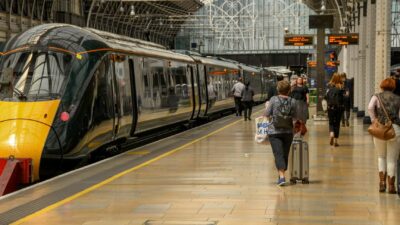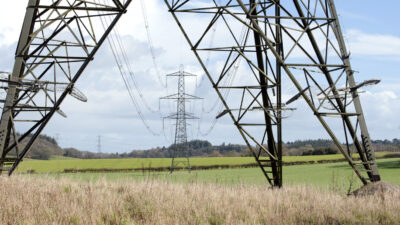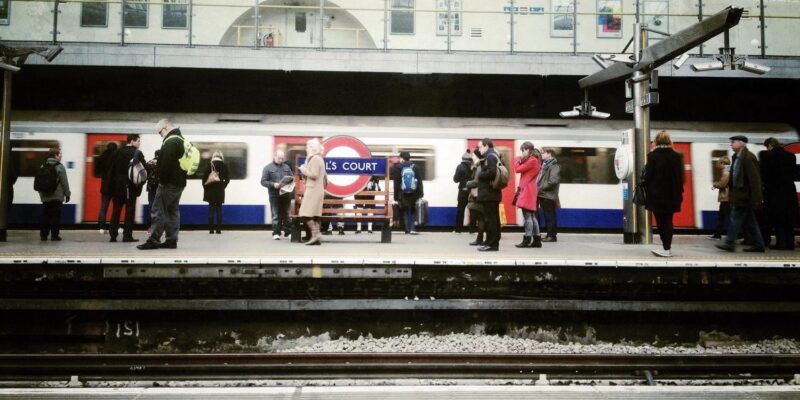Video (conferencing) killed the commuter star?
For many of us, workplace communication has moved online due to the coronavirus pandemic. What does this mean for traditional transport infrastructure that is geared towards enabling greater employment density? Have we reached peak agglomeration and, if so, what does this mean for investment priorities?
The idea that transport and other infrastructure networks facilitate the development of clusters of similar companies, or enable people and companies to access one another and therefore accentuate productivity, has been with us since the re-emergence of cities as the predominant spatial form in the 1990s. Of course, clusters of companies making similar things in the same area, and sharing human capital and suppliers, have been with us for much longer. Examples from modern times include Silicon Valley, or the development of rubber and palm oil plantations in southeast Asia in the last century.1
Indeed, the notion that better transport networks lead to higher productivity through the mechanism of enabling clusters and matching people with jobs has been enshrined in government decision-making in many countries. Transport scheme promoters are often expected to quantify the benefits that their improvement to the network provides to people accessing employment in and around the scheme—the idea being that more clusters will form, or there will be a better match between skills requirements and availability as a result of the enhanced accessibility. For example, a new train station near a new housing estate could enable people to travel congestion-free into a business zone 20km away, thereby encouraging a complementary set of firms to set up business there drawing on the new population centre.
In this way, productivity in the wider economy is enhanced. By ‘shrinking’ the size of the area that people are employed in, making it easier to travel to work or between meetings, we can create more economic output with less input time and lower costs. Importantly, these effects on the wider economy are not captured by appraisals that focus purely on journey-time savings.
Many cities are now dependent on workforces that live an hour or more away from their place of work via some combination of public transport. People commute (an old term derived from the ‘commutation ticket’ introduced in the 19th century that allowed the holder to travel multiple times on a given route over a defined period) into the same location as others working for complementary firms, thus benefiting from the density of companies and employment opportunities.
But as measures to contain the COVID-19 virus were introduced, commuting (and the use of the modern-day commutation ticket, the season ticket) largely stopped, to be replaced by video conferencing and other means of online working for all but manual workers Transport costs reduced drastically, and many firms discovered that their staff could still communicate with each other, and with customers, at least as effectively as before.2 Even large-scale conferences, seminars and roundtables moved online. On this measure, productivity—in the services sector, and arguably in large parts of the manufacturing sector (up to the point where people need to be on site to produce a good) increased considerably (indeed, one tracking analysis suggests an increase of 47%).3
Where does this leave the economics of clustering? Two points need to be considered here.
- In many countries, containment measures have been in place for only two months. While many people are currently indicating that they have no plans to abandon their home office in favour of the company one,4 over time this situation may reverse itself. However, to the extent that staff are no longer required to attend the office full time, as long as they can continue to be productive at home (for example, as long as they are not struggling to combine work and childcare), commuter trips may become less frequent than before the pandemic (and the need for centralised office space in cities less essential). Nevertheless, in the long term, companies may discover that their activities are less effective overall with people working from home (they may not find as many ways to meet new customers, for example), which may ultimately cause a reversion to the pre-COVID situation. Both of these scenarios have implications for city development and transport networks:
- we might encourage the development of city centres so that they are places where people choose to live and work by using the space once used for office space for civil amenities (and use planning restrictions to prevent urban sprawl);
- we might invest in transport networks that enable people to live in a much more diverse range of places, while still travelling effectively to the central points of urban areas when required.
- If there does end up being a long-term impact on the link between access by transport to employment and productivity, this effect may be confined to particular sectors. For example, last-mile deliveries associated with online retail—and the employment that goes with them—have probably increased during lockdown, but the provision of training and university courses has largely moved online wherever possible and away from training centres. This means that the elasticity (the quantified link used in cost–benefit analysis between productivity and the cost of accessing employment) may differ according to the sector. Sectors that really need people to be co-located will retain the importance of agglomeration, but others that don’t will have much lower effects than are currently reflected in appraisals.
- Alternatively, the existing relationships relied on in appraisals may still be valid, but what is currently missing for certain sectors of the economy is the additional ‘mode’ of broadband, videoconferencing and possibly 5G mobile networks when measuring accessibility of employment. To the extent that this mode reduces the cost of obtaining employment, and enabling interactions between firms, its role as an alternative means of productively carrying out business could be better reflected in the analysis.
Concluding thoughts
As most of us are still living through the ‘during-COVID’ phase, it is too early to understand the ‘post-COVID’ phase and how life will return to normal. At the moment, all we are seeing is the end of some habits (e.g. travelling to the workplace) and the start of new ones (such as wearing face masks on public transport). What remains unclear is how company policies, national and international rules, and staff behaviour will play out to create the ‘commuting’ of the future. If large changes do happen, and remain in the ‘post-COVID’ world, the way in which we make decisions about transport investment, and in particular its links to productivity via agglomeration effects, may well need rethinking. And this, in turn, will change the nature of the transport schemes that we invest in—perhaps there will be less need for schemes predicated on supporting increases in employment density in highly skilled, knowledge-based professions. Meanwhile, more emphasis may be needed on those schemes that enable manufacturing clusters, and access to more local employment centres.
1 Giacomin, V. (2017), ‘A historical approach to clustering in emerging economies’, working paper, Harvard Business School.
2 Although, of course, for many roles in the economy requiring a physical presence at work videoconferencing is not a feasible way of continuing to work.
3 Westall, C. (2020), ‘New survey shows 47% increase in productivity: 3 things you must do when working from home’, Forbes, 20 May.
4 Richer, M. (2020), ‘UK workers say they will work from home after lockdown eased’, HR Director, 11 May.
Download
Related

Future of rail: how to shape a resilient and responsive Great British Railways
Great Britain’s railway is at a critical juncture, facing unprecedented pressures arising from changing travel patterns, ageing infrastructure, and ongoing financial strain. These challenges, exacerbated by the impacts of the pandemic and the imperative to achieve net zero, underscore the need for comprehensive and forward-looking reform. The UK government has proposed… Read More

Investing in distribution: ED3 and beyond
In the first quarter of this year the National Infrastructure Commission (NIC)1 published its vision for the UK’s electricity distribution network. Below, we review this in the context of Ofgem’s consultation on RIIO-ED32 and its published responses. One of the policy priorities is to ensure… Read More

